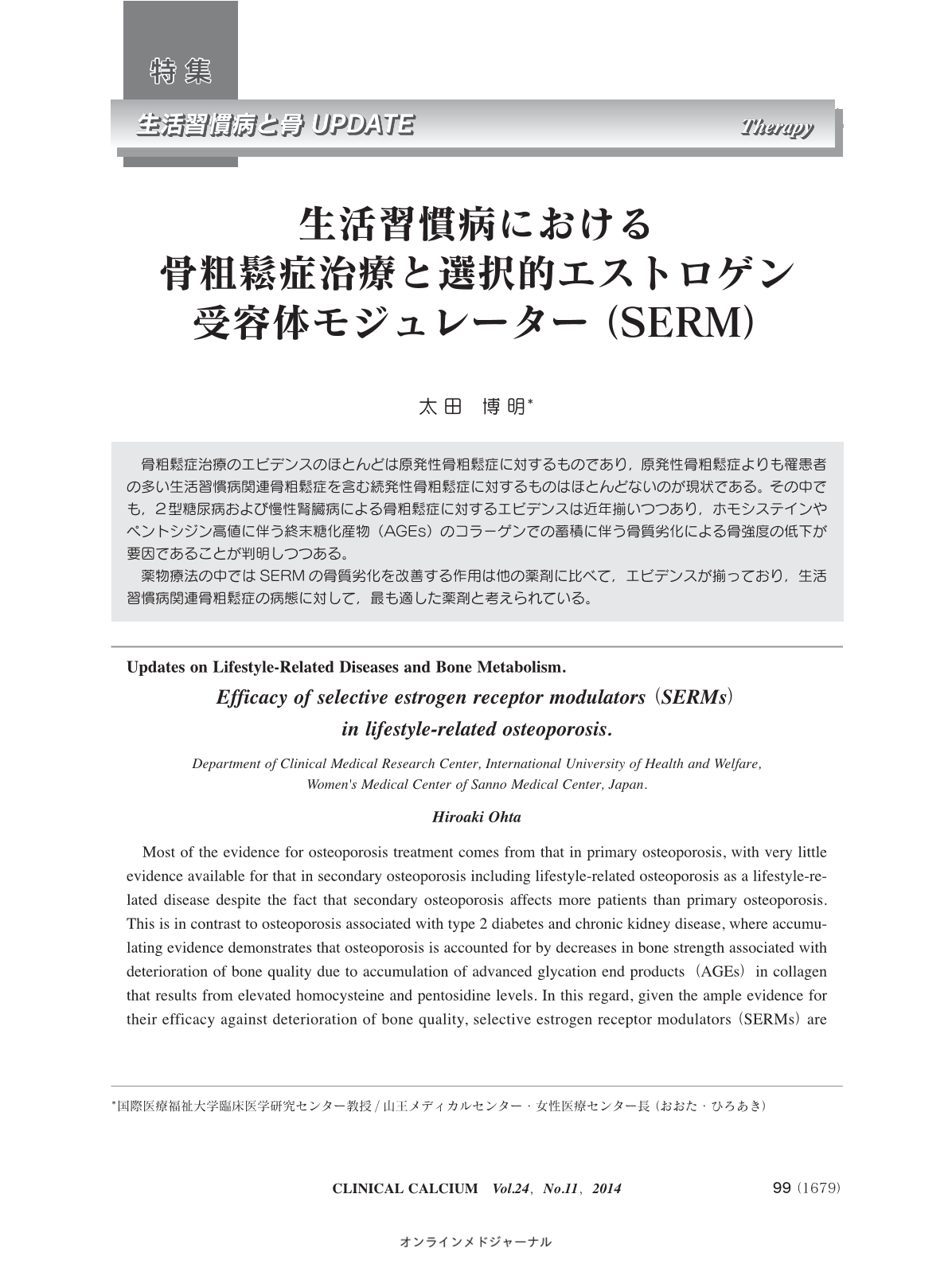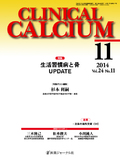Japanese
English
- 有料閲覧
- Abstract 文献概要
- 1ページ目 Look Inside
- 参考文献 Reference
骨粗鬆症治療のエビデンスのほとんどは原発性骨粗鬆症に対するものであり,原発性骨粗鬆症よりも罹患者の多い生活習慣病関連骨粗鬆症を含む続発性骨粗鬆症に対するものはほとんどないのが現状である。その中でも,2型糖尿病および慢性腎臓病による骨粗鬆症に対するエビデンスは近年揃いつつあり,ホモシステインやペントシジン高値に伴う終末糖化産物(AGEs)のコラーゲンでの蓄積に伴う骨質劣化による骨強度の低下が要因であることが判明しつつある。 薬物療法の中ではSERMの骨質劣化を改善する作用は他の薬剤に比べて,エビデンスが揃っており,生活習慣病関連骨粗鬆症の病態に対して,最も適した薬剤と考えられている。
Most of the evidence for osteoporosis treatment comes from that in primary osteoporosis, with very little evidence available for that in secondary osteoporosis including lifestyle-related osteoporosis as a lifestyle-related disease despite the fact that secondary osteoporosis affects more patients than primary osteoporosis. This is in contrast to osteoporosis associated with type 2 diabetes and chronic kidney disease, where accumulating evidence demonstrates that osteoporosis is accounted for by decreases in bone strength associated with deterioration of bone quality due to accumulation of advanced glycation end products(AGEs)in collagen that results from elevated homocysteine and pentosidine levels. In this regard, given the ample evidence for their efficacy against deterioration of bone quality, selective estrogen receptor modulators(SERMs)are currently thought to represent the most efficacious of all available therapeutic agents for lifestyle-related osteoporosis.



